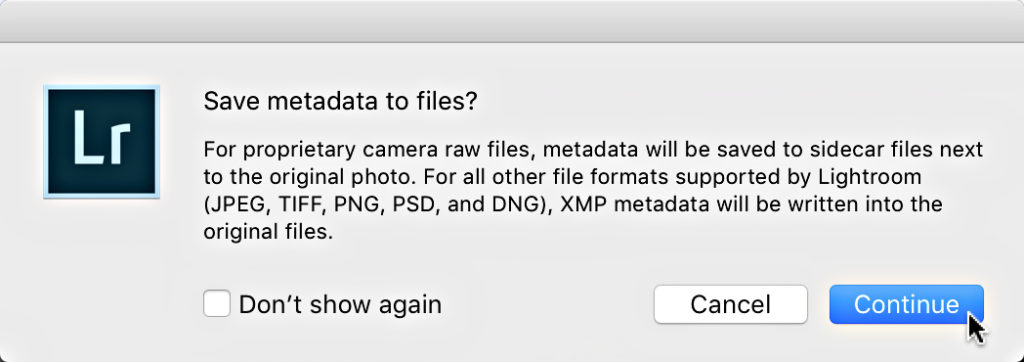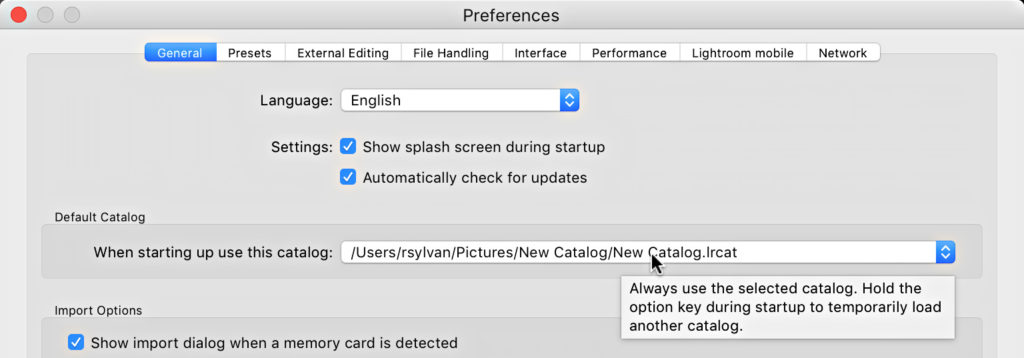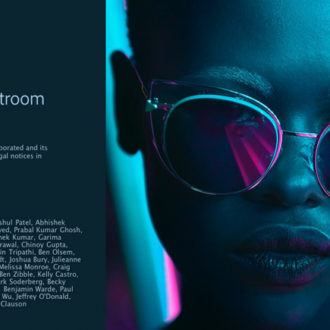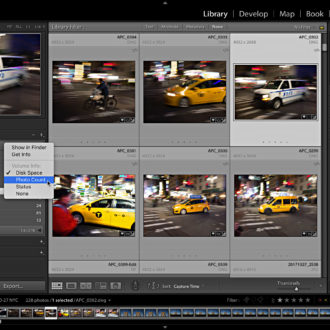Starting Over from Scratch in Classic: Part 3
This week we wrap up my series on starting over. Be sure to read the first and second parts before this one.
Collections and Publish Services
As I mentioned back in the first post, collection membership is not written into XMP metadata, so unfortunately there is no way to transfer (regular) Collections or Collection Sets to the new catalog, so take some notes of the ones you want to re-create manually later. For any Smart Collections you want to bring over, you can export the settings:
Step One: Right-click the Smart Collection and choose Export Smart Collection Settings.
Step Two: In the Save dialog box that appears, confirm the name of the Smart Collection (or give it a new one), choose where you want to save it (someplace you’ll remember) and click Save. Repeat for each Smart Collection.
Later in the new catalog you can create new Collection Sets to organize your collections, right-click the desired Collection Set, and choose Import Smart Collection Settings to bring them in.
Keyword List
Keywords applied to your photos can be written to each photo’s XMP metadata, and when you later import those photos into your new catalog you will see those keywords appear in the Keyword List panel. However, any keywords in your keyword list that haven’t been applied to photos will not be included (and will be lost). To preserve your entire keyword list you can export the list as a text file from your old catalog, and then import that text file into your new catalog.
Step One: Go to Metadata > Export Keywords.
Step Two: In the resulting Export Keywords dialog box, enter a name for the keyword list and choose a location that you can easily find again.
Later, in the new catalog, go to Metadata > Import Keywords, and select that text file to import the keyword list.
Saving to XMP Metadata
OK, we’re as ready as we can be to have Lightroom write all that data to each photo’s XMP metadata. To do this, go back to the Catalog panel and click All Photographs. Press G for Grid view, and select all photos and go to Metadata > Save metadata to files. You might see a little dialog box pop up and let you know that sidecar XMP files will be created for all non-DNG raw files, and for the rest of the supported photo file formats Lightroom will write directly to the photo itself. Click Continue. The progress bar will begin to show its progress, and the amount of time will vary with the size of your catalog. It shouldn’t take too long though. Have patience.

Create a New Catalog
Before you dive into the reorganization of your photos outside of Lightroom, I’d take a moment to create a new catalog via the File > New Catalog menu. Give this catalog a meaningful name, and make sure it is created in a logical location that you can easily find again. This will be where you re-import all your photos later, so give this some thought. Lightroom will relaunch with this new (empty) catalog. Take a moment to set this catalog as the new default catalog by going to Preferences > General, and choosing this specific catalog as the default. That way the next time you launch Lightroom it will be this catalog that opens, and not the old one (Note, you can use the File > Open Catalog menu to open the old catalog if needed). Go ahead and import your keyword list (if you made one) to get that out of the way.

Reorganizing Your Photos
I don’t believe there’s one right way to do this, but I will assume that if you were motivated enough to take on this task, you already have a system in mind. My only suggestion is that it should make logical sense to you and it should easily scale into the future. The only Lightroom related tip I want to give you is to make sure you store those photos within a top-level parent folder, which will make it super easy to import the lot later. Oh, and keep those sidecar XMP files with your source raw photos if you should move the photos around. If you lose the sidecar XMP files you lose all that work you just did.
Importing Into the New Catalog
When you’ve got all of your photos organized the way you’ve always wanted in the location you want them to remain, it is time to import them into the new catalog you created earlier.
Step One: Open Lightroom (make sure it is the right catalog).
Step Two: Click Import.
Step Three: On the Import screen, expand the Source panel on the left, and select the top-level parent folder containing all your photo subfolders. Check the Include Subfolders box. You should see all photos in all folders appear in the center of the import screen.
Step Four: Choose the ADD option at the top of the Import screen. Since the photos are already exactly where you want them, we don’t want Lightroom to move them or copy them. The Destination panel should not be visible.
Step Five: Set everything in the Apply During Import panel to None (if you have a metadata template with just your copyright/contact info then that is fine). You don’t want to overwrite your old work with anything at this point.
Step Six: Double-check your settings and click the Import button to start the process (finger crossing is allowed).
The Import screen will go away and you should start to see photos appear in the center and folders appear in the Folders panel. Any photos with Develop settings should still have the final settings, keywords will appear in the Keyword List panel, Star Ratings, Color Labels, Captions, Titles, and other metadata should be intact. In other words, you are good to go. Best wishes for keeping this new catalog under control as you move on into the future.
Now, I tried to cover all the bases I can think of, but there are a lot of bases. Read these series of posts through a couple of times before starting. Post comments here if you have questions. Good luck!


